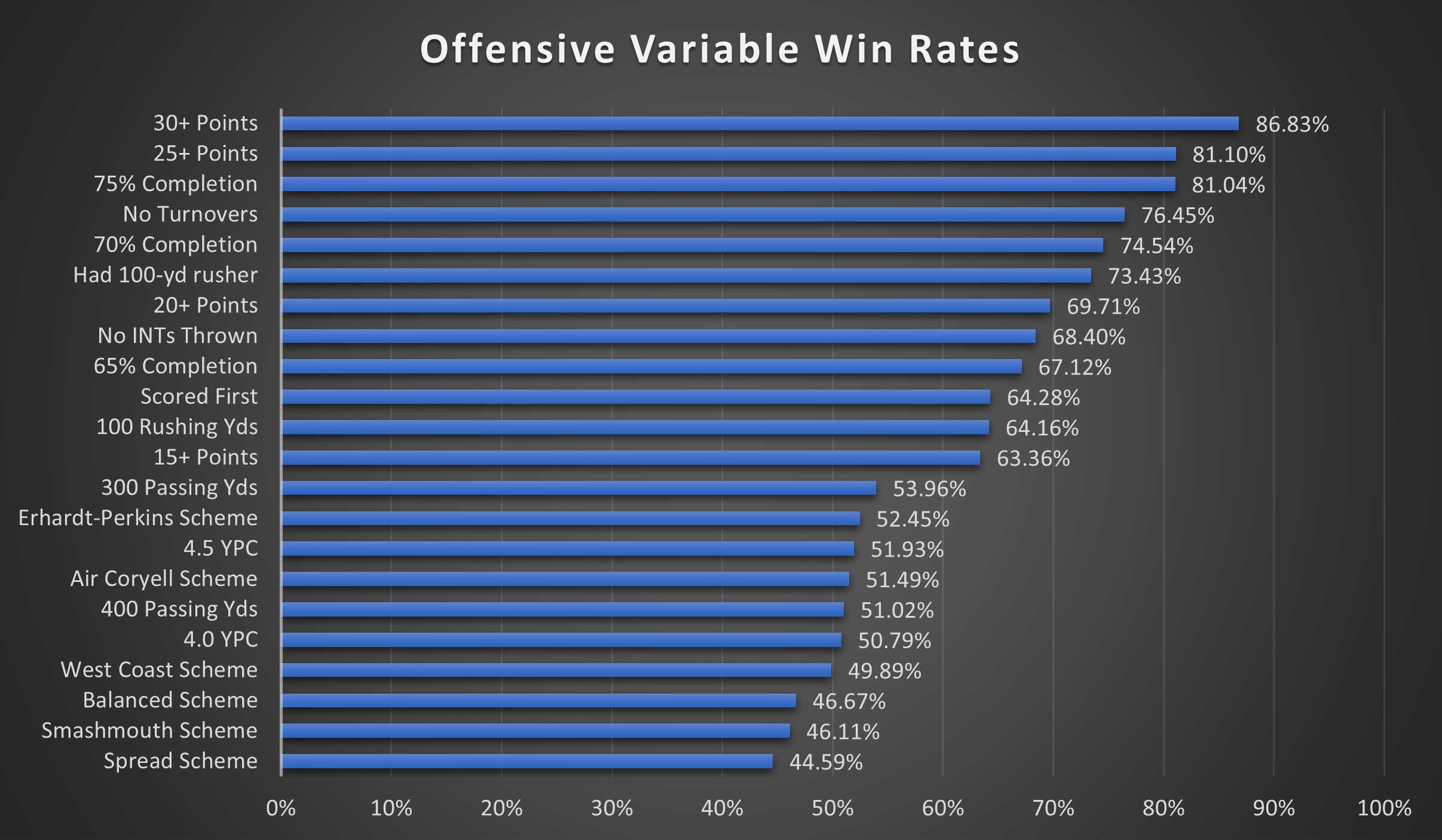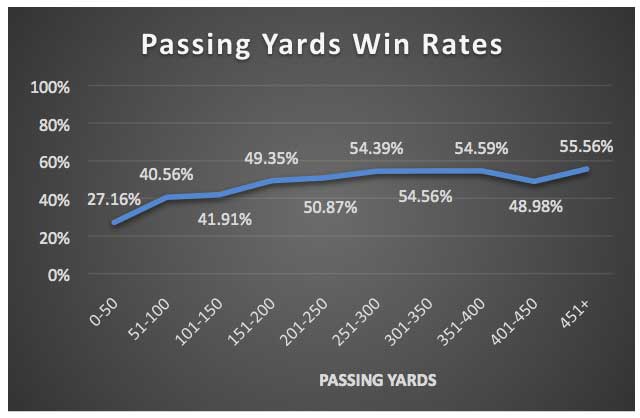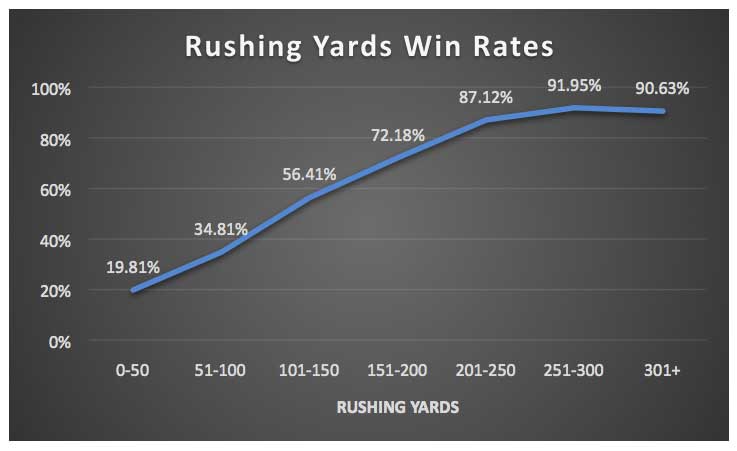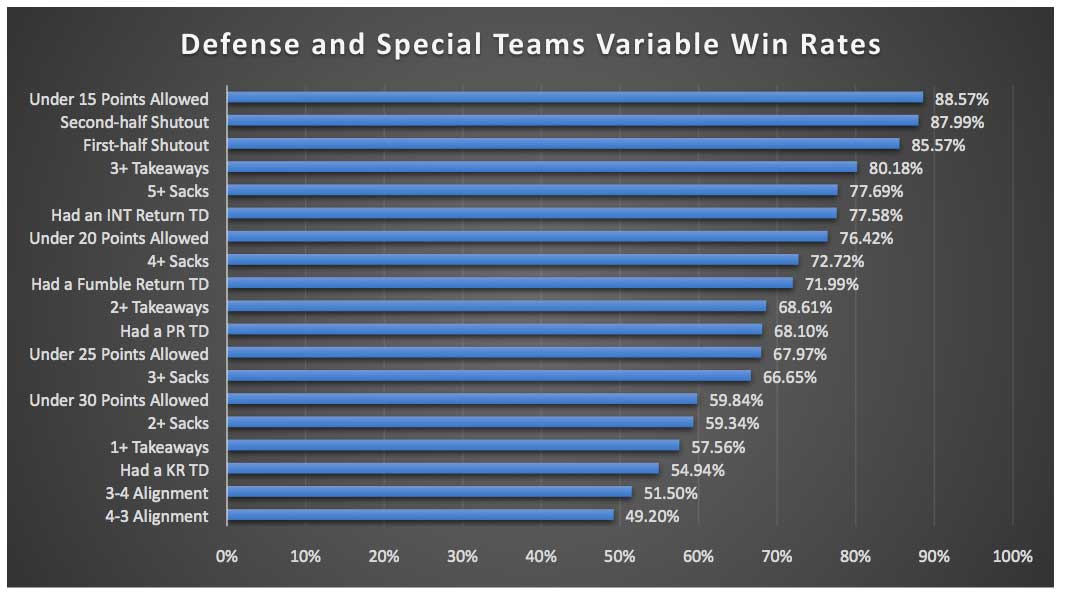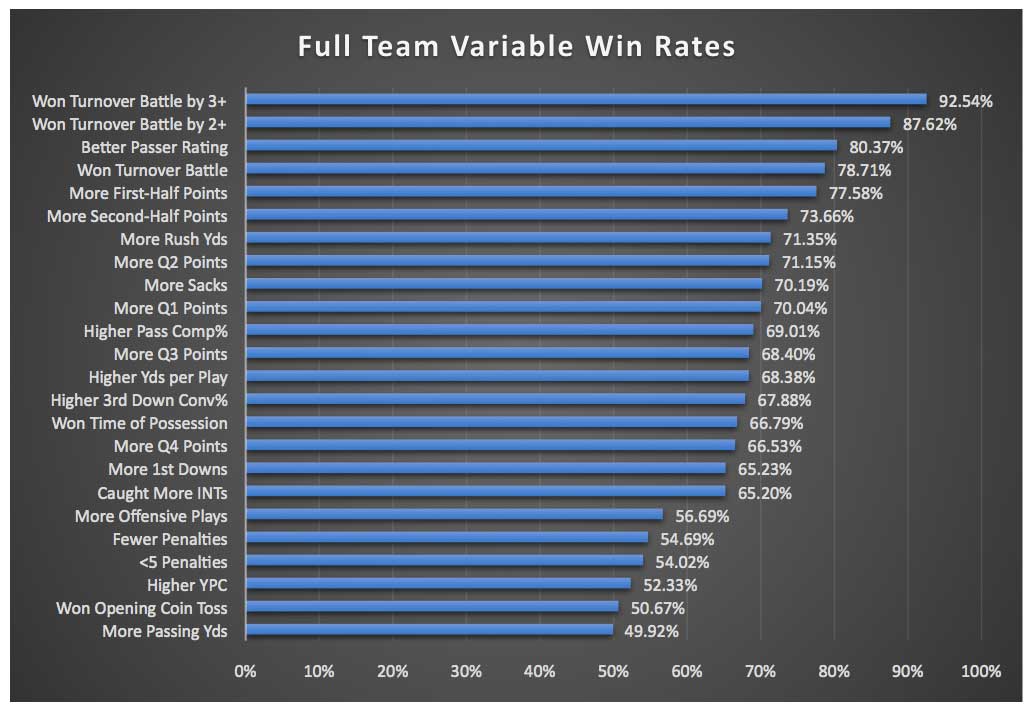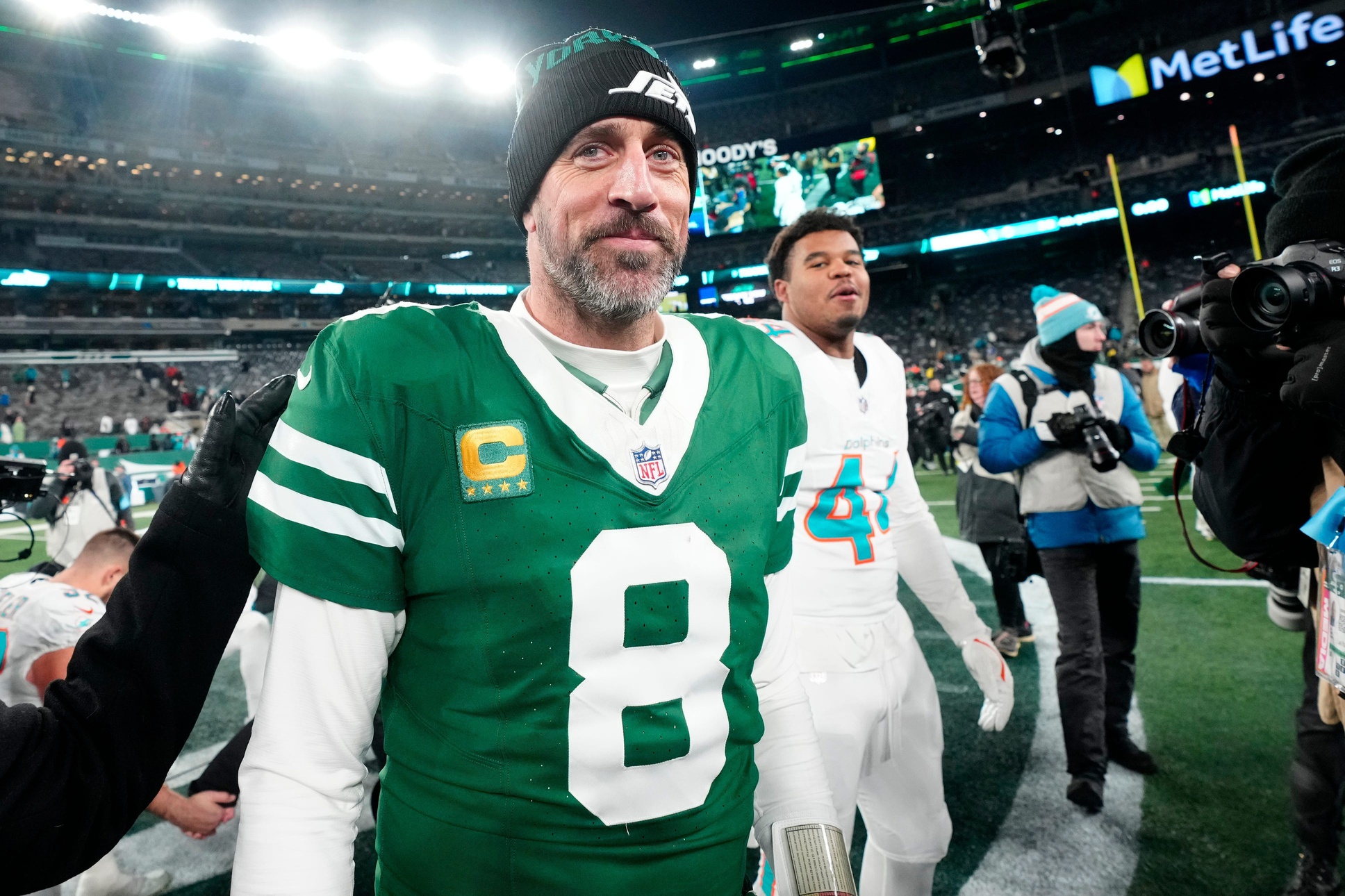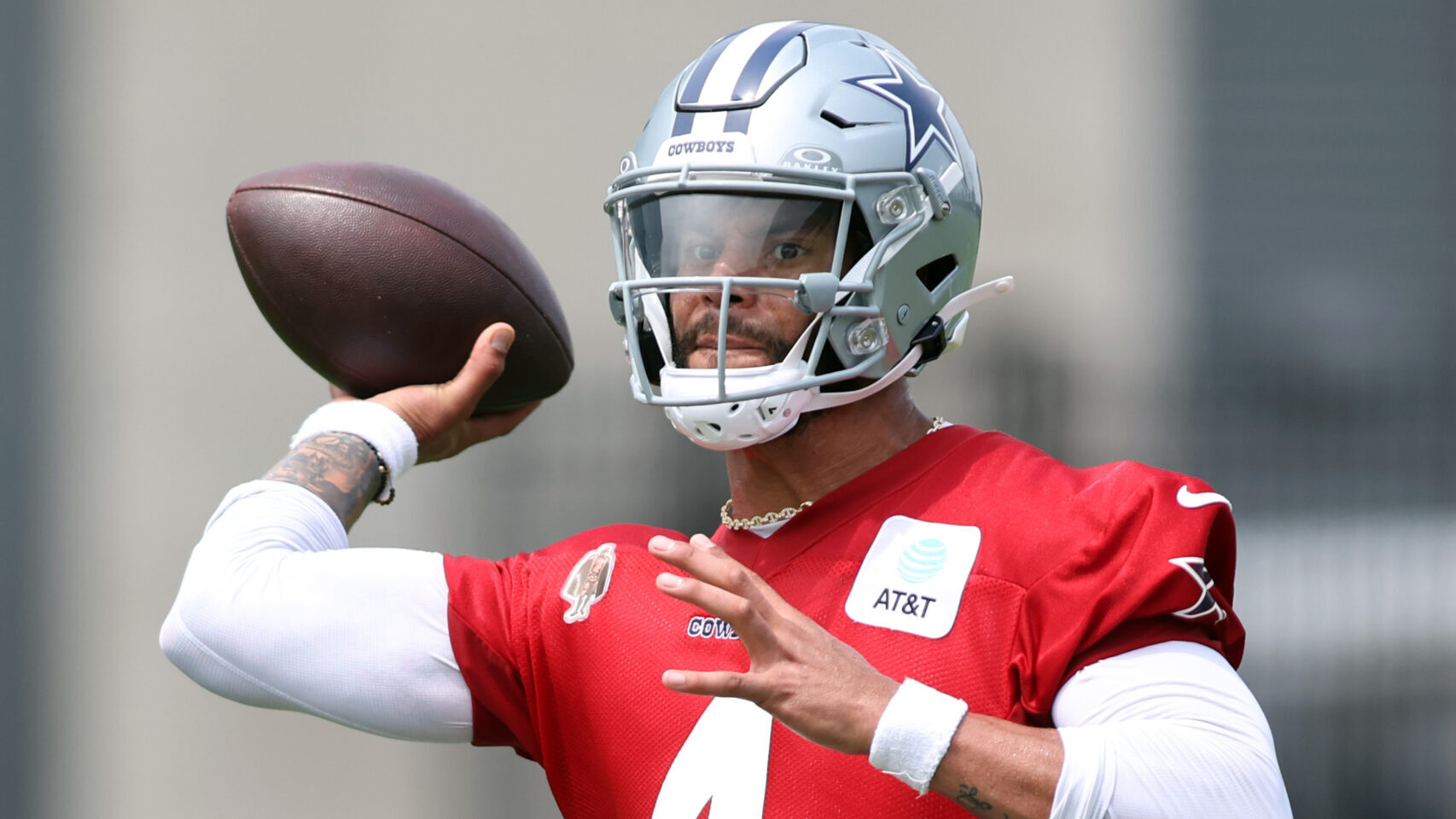Analysis
7/28/21
5 min read
What Wins Football Games in Today's NFL?
At the end of the day, the only sure way to win a football game is by scoring more points than the opposing team. However, there are certain variables within a game that help you more consistently achieve that goal. Mantras like “winning the turnover battle” have been bandied about for decades as keys to success, but how much impact does it have? Even further, how can we construct rosters to maximize a team’s ability to win any individual game? Today, the 33rd Team dives into how to win football games.
Evaluating every game since 2000, both regular season and playoffs, we can track individual variables and find the overall win rate when a team fulfills that variable, whether that’s winning the turnover battle or just the opening coin toss. With 65 factors in total over 5,000-plus games, the cream will then rise to the top.
OFFENSE:
Starting on the offensive side of the ball, the clear takeaway is that avoiding turnovers puts you in a fantastic position to win a game, but it’s still surprising to see that variable roughly equal to a rusher managing 100 yards or completing at least 70% of your passes -- each resulting in about a 75% win rate. In a clear second tier, scoring first has a shockingly high win rate, on par with avoiding interceptions or passing for a 65% completion rate. Although many coaches (most famously Bill Belichick) have chosen to frequently defer on the opening kick, this result opens up the possibility that taking the ball might be more conducive to a win and will be a future point of study.
Other notable results include a surprising lack of importance placed on passing yards or rushing yards per carry. Although a high yards-per-carry number would theoretically allow a team to keep moving the chains, it hasn’t historically resulted in a higher win rate. Furthermore, more passing yards seems to actually decrease the likelihood that a team will win, but this is less surprising when considering the large amount of passing that losing teams attempt towards the end of games.
Even with these seemingly-reduced percentages, we see that a team’s win rate typically peaks between 300 and 400 passing yards at 54%, but the rare true passing shootout games can exceed that. This is much different from the same graph for rushing yards (below), where there is no drop-off.
DEFENSE:
On the other two sides of the ball, we find that shutouts are obviously important, but that a second-half shutout is slightly more important. Takeaways again come up as an important factor, but it’s not to the same level as preventing turnovers – three or more takeaways is only slightly more important than preventing any turnovers. Scoring with your defense is also highly valuable, even more so than with special teams, with a 77.58% win rate when returning an interception for a TD.
Getting after the opposing quarterback is another focus of many defensive coordinators, but this analysis doesn’t find sacks to be as important to winning. Each new sack only brings a small incremental increase in win rate, and building a defense around sacks is difficult because it is a relatively high-variance statistic, with only 1,206 games of 5-plus sacks since 2000. This means the average team got 5-plus sacks in only 1.79 games per season over that time span, more or less a freak occurrence.
FULL TEAM:
As we’ve seen, turnovers really are king. This leads to a prioritization of defensive players who can create takeaways, like Xavien Howard and Marlon Humphrey, and offensive players who can prevent them, like Drew Brees and David Montgomery. Furthermore, stopping the run consistently would appear to be more important than the passing game, so acquiring bigger DEs and OLBs that can set the edge with strength should bring more success than sole pass-rush specialists.
The other main question would be how to score more points. Putting up hundreds of rushing yards each game would definitely lead to wins, but it’s extremely hard to do so consistently without over-investing in a runner. Based on this analysis, a more balanced attack with a consistent passing game that moves the chains and picks up repeated first downs is the premier offense to win on any given day, even if it doesn’t create the splash plays that will show up on highlight reels the next day.
Which teams most matched these ideals in 2020? The Buffalo and Kansas City offenses tied for the league lead in first downs, both converting nearly 50% of their third downs. Green Bay and Tennessee had a similar third-down conversion rate, but committed the fewest turnovers in the league with only 11 and 12, respectively. On the defensive side, Tampa Bay, Indianapolis and the Los Angeles Rams gave up the fewest rushing yards in the NFL, while Miami, Pittsburgh, Buffalo and New Orleans were the top finishers for takeaways. In all, nine of the 14 playoff teams finished top three in at least one of these metrics, with the five holdouts being Baltimore (4th in third-down conversion rate), Seattle (9th in preventing turnovers and 8th in scoring), Cleveland (4th in preventing turnovers and 7th in third-down conversion rate), Washington (7th in takeaways) and Chicago (8th in both). Clearly, there’s something to this analysis and a lot of opportunity to study further.

